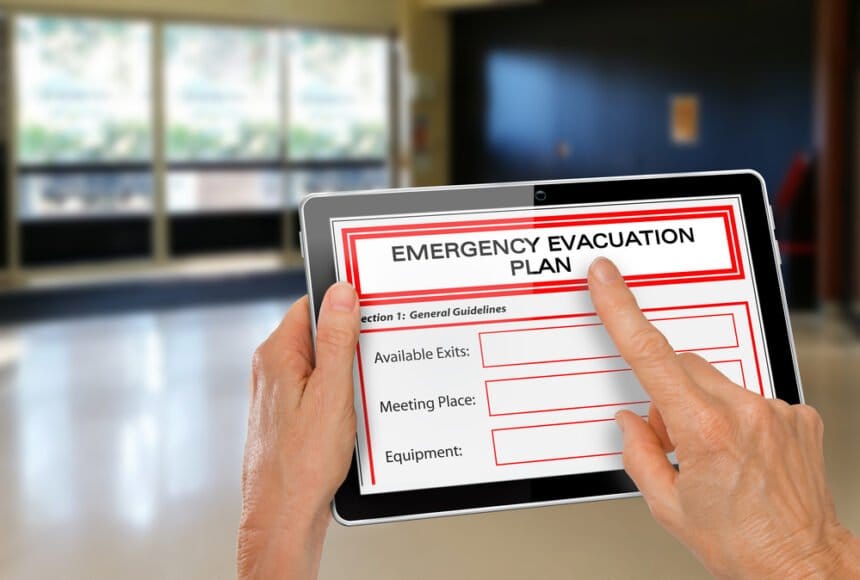Last year, the World Meteorological Association reported that AI technology is playing an increasingly more important role in disaster management. It is easy to see why this is an important topic of conversation in 2023.
Climate change, the pandemic and a number of other factors have caused the number of disasters to increase significantly in recent years. Fortunately, AI technology can help mitigate some of these issues.
Global disasters can start in small, localized areas. AI models can detect an increase in mentions or events within specific domains and compare them to related data points. This allows us to be alerted to potential disasters before they happen.
More Organizations Turn to AI to Deal with Looming Threats of Disasters
The International Telecommunications Union reports that a number of organizations around the world are taking new steps to help utilize artificial intelligence to manage disasters more effectively. WMO, ITU, and UNEP are collaborating to investigate the use of AI in disaster mitigation. They formed the expert Focus Group on AI for Natural Disaster Management to assist in integrating AI into global disaster-management systems.
Businesses that recognize the growing threat of disasters need to take advantage of artificial intelligence in order to prevent them. A number of technological tools at their disposal rely on AI to help deal with these growing problems.
Disaster restoration services help residential and commercial spaces recover from any natural or man-made disasters. It’s an important industry ensuring prevention, management, and recovery during critical emergencies, which entails leveraging the right AI tools.
Managing such an important task requires digitization to ensure effective disaster restoration and management. For this purpose, read this article to know how disaster restoration software helps in efficient operations.
What is AI-driven disaster restoration software?
Disaster restoration software helps a business manage and automate various operations that help in restoring a disaster-affected area. It helps streamline communication, project management, dispatching of field service technicians, and reporting. The best tools rely heavily on AI to help manage these threats.
Features of disaster restoration software:
Good disaster restoration software should include five key features for efficient operations management, which are available due to recent developments in AI technology:
- Real-time updates: every passing minute is important to restore disaster-impacted areas. Real-time updates to communicate, and share proofs and images is critical to ensure timely actions. Fortunately, AI technology has helped make real-time updates more efficient.
- Collaboration tools: the ability to share documents, communicate in real-time, and coordinate with teams helps implement solutions effectively.
- Resource allocation: knowing how many resources and manpower to allocate helps finish restoration projects on time. Disaster restoration software helps automatically allocate via state-of-the-art AI algorithms.
- Project monitoring and management: knowing the effectiveness of the restoration process helps understand the impact of their efforts. Essential project management features help gain visibility on work completed. AI technology makes it easier to monitor the progress of various projects and provides meaningful insights to manage them more effectively. Tools like Selenium can help automate many of these tasks with the benefits of AI.
- Reporting and analytics: digitization removes manual paperwork-based record keeping and provides instant insights on costs, timelines, and other performance metrics. AI technology further improves analytics by helping draw inferences from various data pools to make better insights.
How does AI-driven disaster restoration software enhance operational effectiveness and efficiency?
The key benefit of disaster restoration software involves the automation of manual tasks and better collaboration among the team members, clients, and on-ground technicians.
Here are 5 important ways in which AI-driven disaster restoration software helps improve business operations:
Automated project administrative tasks
Disaster restoration software includes project management features and the capability to automate manual tasks. New AI technology makes automating these tasks more effective than ever.
For example, you may want to collect initial inspection data on the site and share it instantly with the project managers. The software enables such collaboration without having to be physically present on the disaster site. It can also automate manual administrative tasks like managing field service technicians’ timesheets, obtaining job statuses, automating email follow-ups, etc.
Tools for data analysis
Proper disaster management study involves studying vast amounts of data about the site, the location, past disaster history, cultural or environmental changes, etc. AI technology has made data analysis more effective than ever, as we mentioned in this post. It helps them decide on relevant and long-term solutions by taking into account those factors.
For example, a disaster restoration firm will suggest an alternate style of construction if the location is flood-prone. It will understand the weather patterns, usual rainfall or wind intensities, etc to suggest appropriate construction methods.
Remote monitoring
It is not possible for managers and specialists to frequently visit the disaster site. In such a situation, getting equipped with remote monitoring tools is important to track work in progress. It also helps troubleshoot immediately using remote tools for instructing the on-ground technicians.
Digital remote monitoring also helps keep the disaster site in check for any new hiccups in the restoration work. For example, it is possible to enable IOT devices to track seismic activities for earthquake-hit job sites and alert for any abnormal activity.
Efficient documentation management
Documentation is very important in the disaster restoration business. Documenting every detail regarding pre and post-disaster restoration measures helps understand the effectiveness of solutions. It helps maintain an audit trail so that any future mishaps are easily traced back to the cause.
Disaster restoration software helps document changes and suggest troubleshooting measures for teams who will manage the site post-restoration. It makes this information digitally accessible across devices. It is also possible to generate timely reports and store them for reference.
Customer experience and training
Post the disaster restoration work, it is a good practice to train the incoming residents by effectively onboarding them. Disaster restoration software helps provide necessary documents, videos, or other resources to either provide DIY training on facilitate live workshops. It also helps improve customer experience by timely updating about the work in progress and measures taken to prevent future mishaps.
Embrace AI-driven disaster restoration software for implementing a long-term solution
AI-driven disaster restoration software helps you provide the best services to your customers. It showcases professionalism and builds trust in your process of execution.







